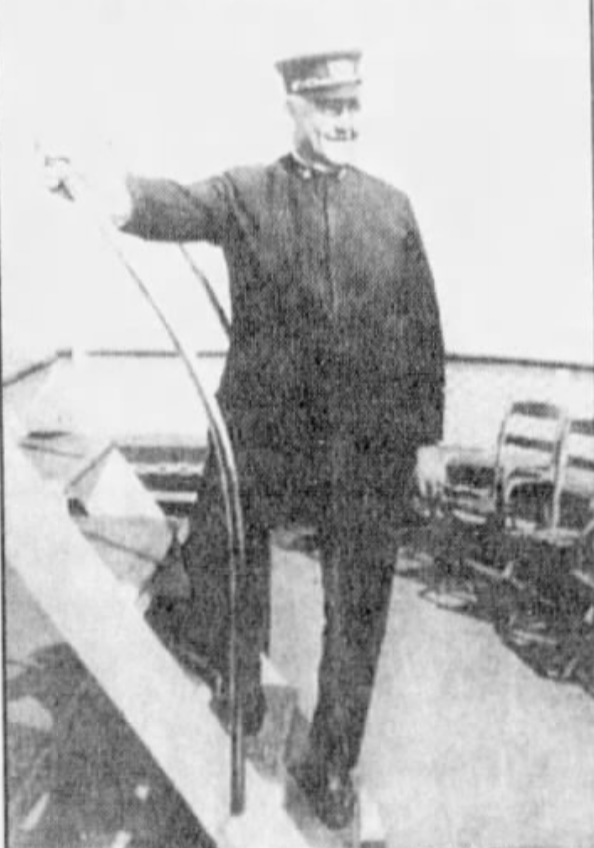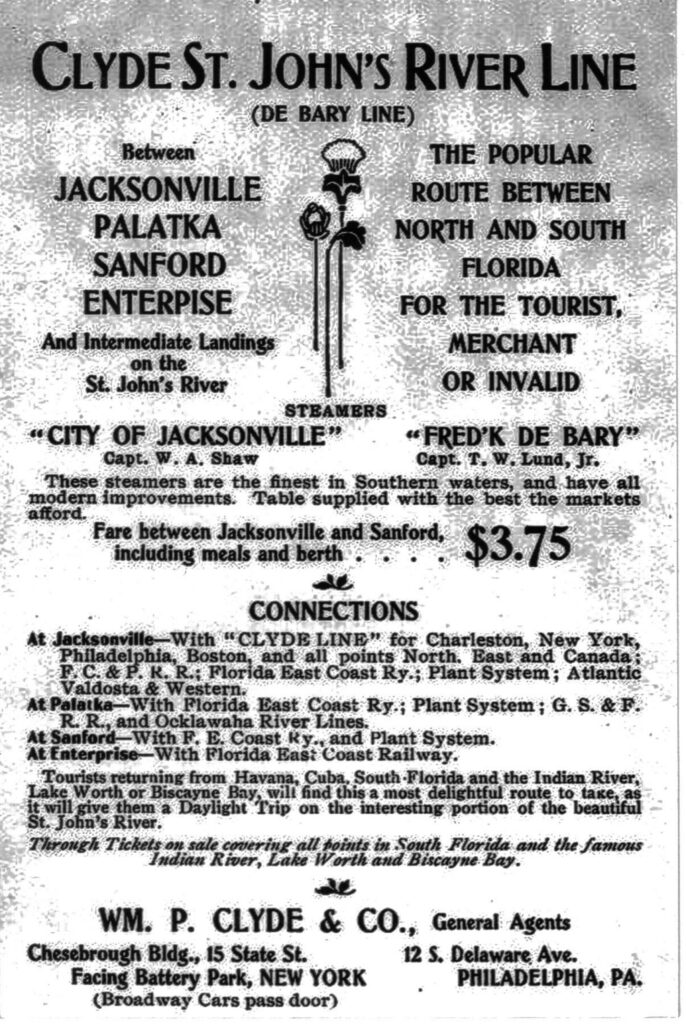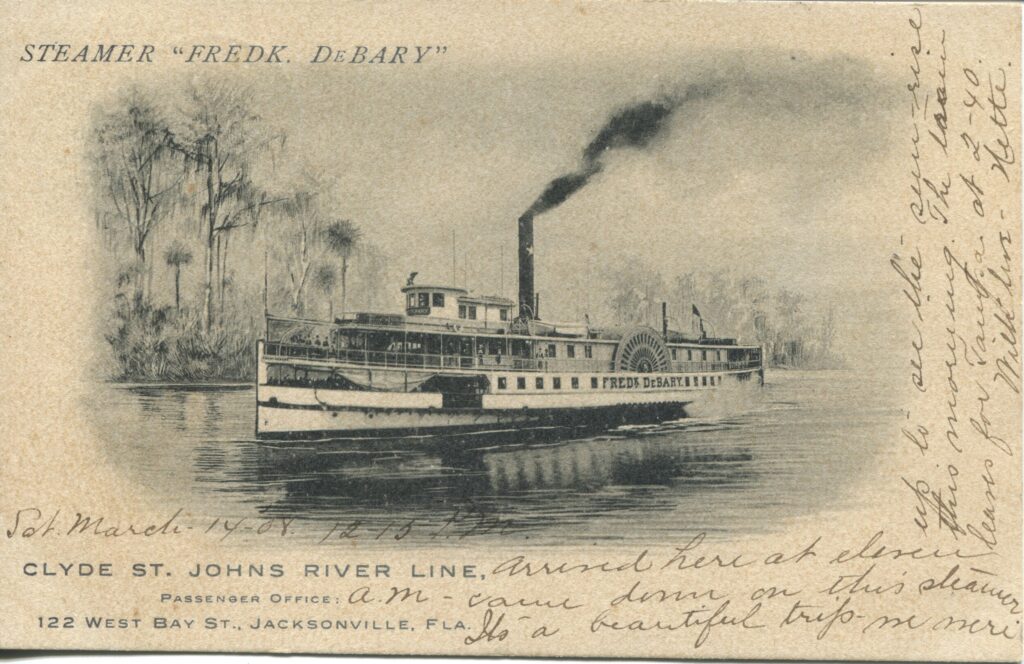
The Frederick DeBarry steamship was captained by Thomas Lund, Jr. It was part of the Clyde Steamship Line from Jacksonville to Enterprise and Sanford.
The Lund family—Thomas Lund Senior and then Junior—were primary steamship captains in the early days of regular service between Jacksonville and Sanford.
Captain T. W. Lund of the Clyde Streamship Company described his earliest memories of coming to what is now Seminole County:
“In the year 1873, June 6, I came to Florida to visit my parents; my father was operating a steamboat between Jacksonville and Salt Lake, the latter the nearest point to Titusville by water. I was a boy of fourteen years of age. We had competition the first year our steamboat was in commission by two other streamers, but as there was not enough business for three boats, the Silver Springs and Lollie Boy left the business for the Volusia, my father’s boat.
In addition to connecting team teams at Salt Lake for Titusville, Sand Point, and the Indian River country, we also connected with teams at Tuscawilla, a landing on Lake Jesup, where Mr. G. C. Brantley, a former state senator from Orange County, operated a large store and warehouse from which teams from Maitland and Orlando hauled freight.
At that time the leading merchants of Orlando were W. A. Patrick, J. R. Montague, J. DeLaney, W. G. White, and Nat Poyntz, and perhaps others whom I never knew.
There was a strong talk of a railroad being built from Tuscawilla to the points above mentioned. In fact, Mr. Brantley visited New York to purchase iron for said road. It was winter and he contracted cold, terminating in pneumonia, and he died there. His death put an end to the project.
Capt. Jacob Brock operated two steamers to Mellonville from Jacksonville, leaving the latter place at 10 a. m. daily except Sunday, stopping over night at Palatka until 4 a. m. the following morning, arriving at Mellonville and Enterprise at about 4 to 6 o’clock in the afternoon.
Later there was another boat called the Starlight which owned by Capt. Coxetter, but this only ran during the winter months for tourists; it afterward caught fire and burned at Sanford.
In December 1874, my father built a boat to explore the Wekiva River. On the 23rd of December of that year we entered the little stream, but it was so blocked with fallen trees and a water plant known as lettuce that we found it a difficult matter to make much headway. We did, however, manage to reach Clay Springs, after removing the sunken trees and clearing away the lettuce by using hoes and rakes and all kinds of agricultural implements.
We continued for a year to operate this boat, connecting at the entrance to the Wekiva River with boats to and from Jacksonville.”
References
Photos


